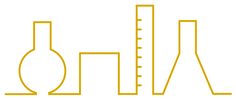|
3 min read - Improving conceptual understanding in chemistry Johnstone's triangle can be a helpful tool for structuring conceptual thinking. Alex Johnstone suggested that we might think about chemical knowledge at 3 different levels:
Although a little time consuming, I have found that it can be helpful for students to make connections between the three levels in order to strengthen their conceptual grasp a particular piece of knowledge.
I have tried to summarise these ideas in this video and this RSC article goes into a little more detail of how you might use it in class.
0 Comments
Leave a Reply. |
ArchivesCategories |
- Home
-
Topics
- Course structure
- Measurement in chemistry
- Structure 1 - Models of the particulate nature of matter
- Structure 2 - Models of bonding and structure
- Structure 3 - Classification of matter
- Reactivity 1 - What drives chemical reactions?
- Reactivity 2 - How much, how far, how fast?
- Reactivity 3 - What are the mechanism of chemical change?
- IA - The scientific investigation
- Core concepts
- NOS and TOK
- Newsletter
- Podcast



 RSS Feed
RSS Feed